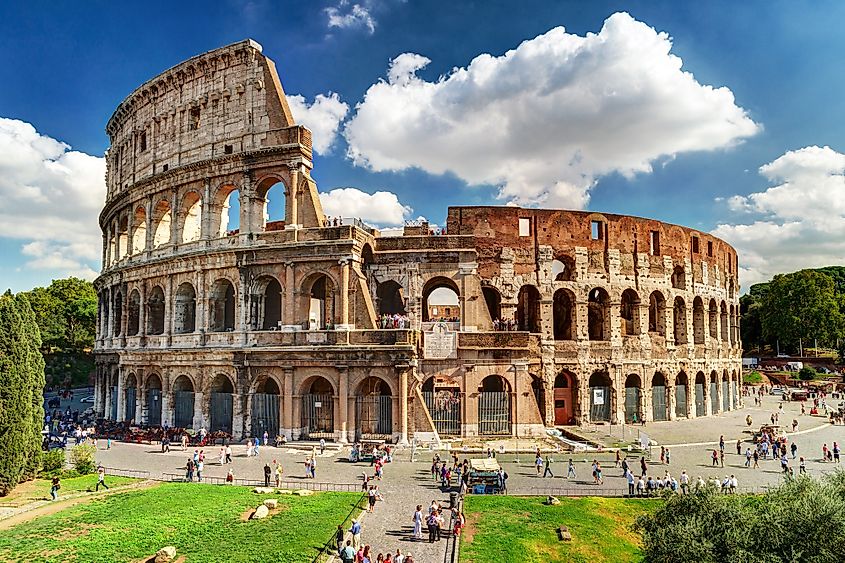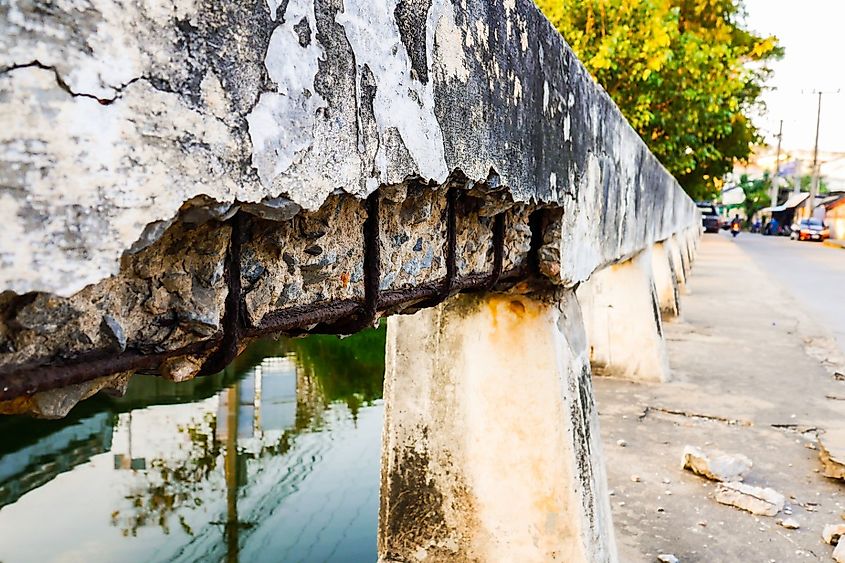
Why Modern Concrete Crumbles, But Ancient Roman Concrete Lasts Forever
The Roman Empire had a profound impact on government, culture, and trade, shaping the course of history. In addition to social structures, centuries later, concrete buildings from the Roman Empire have survived. The impressive longevity of their concrete structures and perfect proportions and symmetry resulted in buildings that were strong as well as visually appealing.
Examples of Roman architectural influences are scattered throughout Washington DC, and across the nation. Many government buildings, museums, and banks in Western civilization currently utilize Ancient Rome's classic details, including columns, domes, and arches, to incorporate a feeling of greatness and power.
Banks, in particular, have utilized the visual balance of columns and high ceilings to portray vast composure. For example, in San Francisco, on Grant Street is a five-story building, once used as a Savings Union Bank, and designed by Bliss & Faville and constructed in 1910. The Roman Empire may have ended in 476 CE, but the vast structures such as the Colosseum and Pantheon still stand, leaving a legacy and a mystery.
In contrast, modern concrete crumbles in less than 50 years. With modern technology, concrete should, in theory, last longer. Why does modern concrete crumble, but ancient concrete lasts forever?
Roman Buildings

Throughout the Ancient Roman Empire's rule, many spectacular buildings were designed and constructed. Amphitheaters were open-aired, circular theaters with raised seats where public events took place. In the heart of the empire, the iconic Colosseum was Rome's mecca for entertainment, including gladiator fights and executions.
While entrenching their rule over Europe and Africa, the Roman Empire enhanced the social functioning of their territories. Aqueducts transported fresh water to multiple regions. Remnants of these aqueducts remain an engineering marvel, found as far as Spain, France, Turkey, Greece, and North Africa.
Ancient Roman housing, called insulae, accommodated most of the urban population. The insulae ranged from members of the lower class, plebeians, to the higher elite class, domus.
To commemorate important events or people, massive triumphal arches were erected. From the multitude constructed, only three have survived: the Arch of Titus, the Arch of Septimius Severus, and the Arch of Constantine. These structures have withstood the test of time, allowing modern visitors a glimpse of the story of the famous Roman Empire.
Roman Architecture

Roman Emperors borrowed architectural details from Greece, which influenced the future of Roman culture. Emperor Hadrian utilized architectural details while implementing his imperial restoration program. Emperor Vespasian oversaw the construction of the Colosseum.
Roman architect Vitruvius wrote De Architectura in the first century BCE, proposing that all buildings should incorporate strength, utility, and beauty. Architecture also served to intimidate. By creating a mini Rome within each territory, imposing, symmetrical structures were a daily demonstration of the empire's strength.
Early examples follow Grecian templates, showcasing classical designs to include Doric, Ionic, and Corinthian columns. Temples during this time were strictly rectangular, with architectural details depicted on the front facade. The Temple of Portunus in Rome and the Maison Carrée in Nîmes, France, portray examples of these early designs.
Additionally, decorative materials sourced from throughout the empire included granite from Egypt and marble from the Greek islands. With advanced engineering, Roman buildings incorporated domes and arches along with classic columns, resulting in massive decorated structures.
Ancient Roman Concrete versus Modern Concrete

The Romans cultivated the widespread use of concrete. The resilient material fabricated from volcanic ash, lime, seawater, and volcanic rocks has withstood the test of time. The chemical reaction with seawater is called the pozzolanic reaction, named after the city of Pozzuoli, which contributes to the durability of the concrete. Ancient Romans were inspired by cemented volcanic ash deposits they saw to recreate this mixture to use for construction.
To understand the longevity of Roman concrete, University of Utah geologist Marie Jackson and her colleagues extracted samples of concrete from Pozzuoli Bay near Naples, Italy. When analyzed, the team concluded the seawater had dissolved parts of the volcanic ash, resulting in new minerals to grow, creating Al-tobermorite to form. Al-tobermorite produced crystallized shapes that strengthened the bond and reduced resistance to becoming brittle.

In contrast to Roman concrete, modern concrete is a mixture of Portland cement that includes chalk, clay, and fresh water. Instead of volcanic rock, as the Romans used, modern cement uses rocks and sand as aggregates to bulk the mixture. Unlike Roman concrete, the modern compound dries significantly faster but uses steel rebar to reinforce construction.
Professor Admir Masic, Ph.D., at MIT, concludes that the steel used to strengthen concrete, also weakens it. Over time, water reacts with the concrete to create calcium hydroxide carbonate, which causes the rebar to corrode. The result is cracks in the surface of the concrete. If left untreated, the cracks expand, causing the structure to crumble. However, despite Roman concrete's increasing durability over time, it is not used in modern construction. It is not strong enough to handle modern use when first constructed, as it takes time for the concrete to firm up.
To Summarize
Concrete is a versatile construction material. From buildings, dams, bridge supports, and sidewalks, concrete is the foundation of many ancient and modern-day structures. The Romans built massive concrete structures with arches to withstand the weight, leaving behind solid reminders of their impact. Proximity to the sea and volcanoes contributed to the durability of Roman concrete.
However, Roman concrete takes time to evolve, while modern concrete is easily prepared and applied. While functional in some contexts, it is unlikely the use of Roman concrete will become routine again. Until further scientific advances invent a new substance, modern concrete will continue to crumble, while Ancient Roman concrete will continue to last forever.











